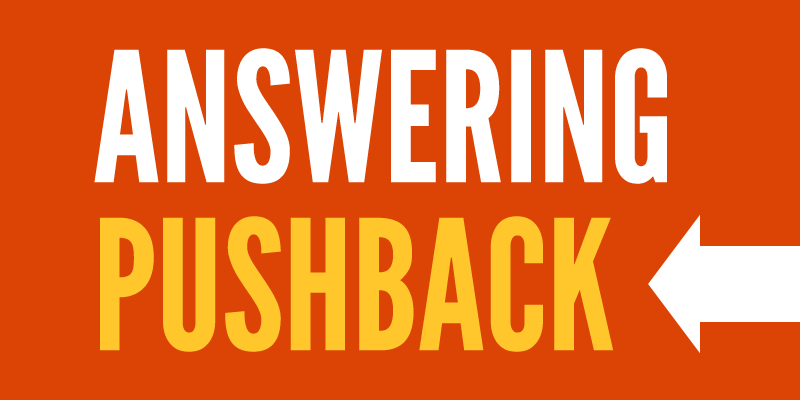 Pivoting away from a hard question may work in political debates, but it’s not how you win customers in the B2B world. To allay prospects’ concerns and earn the kind of trust that results in a deal, you’ve got to address pushback questions directly. Here’s what to do next time you’re challenged by a tough question in a B2B sales pitch.
Pivoting away from a hard question may work in political debates, but it’s not how you win customers in the B2B world. To allay prospects’ concerns and earn the kind of trust that results in a deal, you’ve got to address pushback questions directly. Here’s what to do next time you’re challenged by a tough question in a B2B sales pitch.
1. Realize your prospect’s pushback is genuine.
You can’t just brush it off. Questions that come up during your sales pitch require truthful, compelling answers before your B2B buyer will feel comfortable purchasing your product or service.
- Sample pushback question:
“Everyone seems to have turbochargers these days. But your widgets don’t include a turbocharger, do they?”
2. Make peace with who you are and what your company offers.
Your prospect is talking to you because they’re interested in what you have to offer – not what you don’t have to offer. Don’t get caught up in trying to be something you’re not. Be honest about what your company can and can’t do. Don’t make excuses.
- Answering pushback (part one):
“You’re right. Our widgets don’t come with turbochargers. …”
3. Own your weaknesses.
Prospects can smell fear. So, don’t be defensive. When you figure out how to own a weakness, it actually becomes a strength. Apologize for it, or try to shrug it off, and it counts against you. But what if you actually do have a shortcoming compared to your competition? You’ve got to show why that’s not where the real decision should be made anyway.
- Answering pushback (part two):
“… Actually, we’ve never offered turbochargers – and probably never will. Turbochargers are an added expense. Other widget makers include them because their widgets need the performance boost in order to compete. But if you design it right from the outset, your widget will do exactly what it’s supposed to do – without additional help. I’d be happy to put you in touch with one of our customers who relies on our stock widgets every day.”
Ultimately, whether or not a widget comes prepackaged with a turbocharger should not be the deciding factor when selecting a company to provide your widgets. There are other more important factors like design, reliability, cost, service, etc. that the real buying decision for a widget should focus on.
Avoid the pivot – and move towards the close.
Equip yourself (and all your salespeople) with clear, confident answers to common pushback. Jot down half a dozen of the hardest pushback questions you hear from prospects and work out honest answers for each. If you’re like most B2B companies, you hear the same few pushback questions all the time. When you’re prepared, you can answer them with unflinching confidence. Then, both you and your prospect can move on to the next stage of the buying cycle.
Leave a Reply